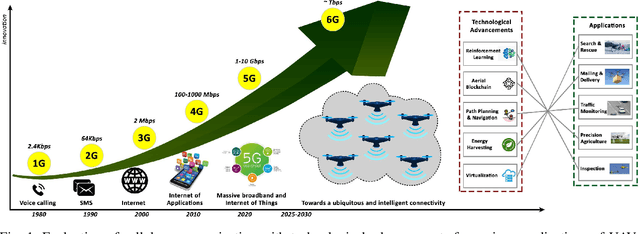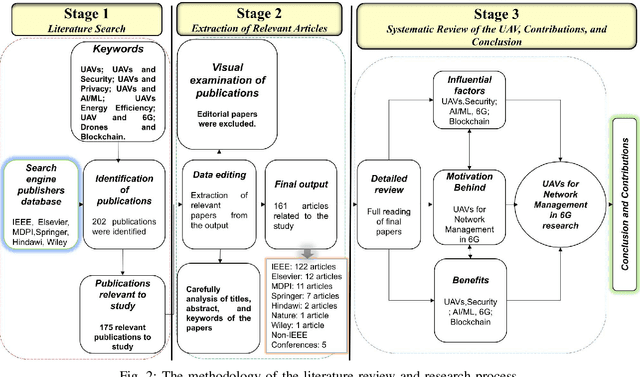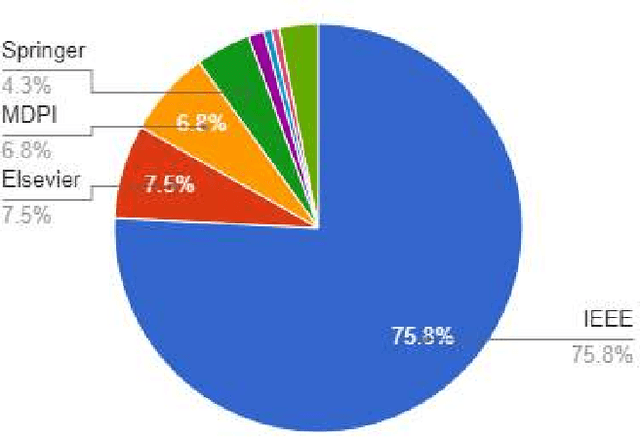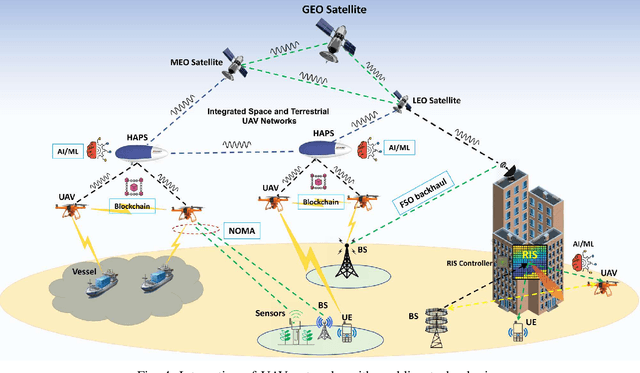Syed Agha Hassnain Mohsan
IRS-assisted UAV Communications: A Comprehensive Review
Jun 28, 2023Abstract:Intelligent reflecting surface (IRS) can smartly adjust the wavefronts in terms of phase, frequency, amplitude and polarization via passive reflections and without any need of radio frequency (RF) chains. It is envisaged as an emerging technology which can change wireless communication to improve both energy and spectrum efficiencies with low energy consumption and low cost. It can intelligently configure the wireless channels through a massive number of cost effective passive reflecting elements to improve the system performance. Similarly, unmanned aerial vehicle (UAV) communication has gained a viable attention due to flexible deployment, high mobility and ease of integration with several technologies. However, UAV communication is prone to security issues and obstructions in real-time applications. Recently, it is foreseen that UAV and IRS both can integrate together to attain unparalleled capabilities in difficult scenarios. Both technologies can ensure improved performance through proactively altering the wireless propagation using smart signal reflections and maneuver control in three dimensional (3D) space. IRS can be integrated in both aerial and terrene environments to reap the benefits of smart reflections. This study briefly discusses UAV communication, IRS and focuses on IRS-assisted UAC communications. It surveys the existing literature on this emerging research topic and highlights several promising technologies which can be implemented in IRS-assisted UAV communication. This study also presents several application scenarios and open research challenges. This study goes one step further to elaborate research opportunities to design and optimize wireless systems with low energy footprint and at low cost. Finally, we shed some light on future research aspects for IRS-assisted UAV communication.
A Contemporary Survey on 6G Wireless Networks: Potentials, Recent Advances, Technical Challenges and Future Trends
Jun 14, 2023Abstract:Smart services based on Internet of everything (IoE) are prophesied to reap notable attention by both academia and industry in the future. Although fifth-generation (5G) is a promising communication technology, however it cannot fulfill complete demands of novel applications. Sixth-generation (6G) technology is envisaged to overcome limitations of 5G technology. The vision and planning of future 6G network has been started with this aim to meet the stringent requirements of mobile communication. Our aim is to explore recent advances and potential challenges to enable 6G technology in this review. We have devised a taxonomy based on computing technologies, networking technologies, communication technologies, use cases, machine learning algorithms and key enabler technologies. In this regard, we subsequently highlight potential features and key areas of 6G. Key technological breakthroughs which include quantum communication, tactile communication, holographic communication, terahertz communication, visible light communication (VLC) Internet of Bio Nano Things, which can put profound impact on wireless communication, have been elaborated at length in this review. In this review, our prime focus is to discuss potential enabling technologies which can develop seamless and sustainable network, encompassing symbiotic radio, blockchain, new communication paradigm, VLC and terahertz. In addition, we have investigated open research challenges which can hamper the performance of 6G network. Finally, we have outlined several practical considerations, 6G key projects and future directions. We envision 6G undergoing unprecedented breakthroughs to eliminate technical uncertainties and provide enlightening research directions for subsequent future studies. Although it is impossible to envisage complete details of 6G, we believe this study will pave the way for future research work.
A Survey of NOMA: State of the Art, Key Techniques, Open Challenges, Security Issues and Future Trends
Jun 11, 2023Abstract:Non-orthogonal multiple access (NOMA) systems can serve multiple users in contrast to orthogonal multiple-access (OMA), which makes use of the limited time or frequency domain resources. It can help to address the unprecedented technological advancements of the sixth generation (6G) network, which include high spectral efficiency, high flexibility, low transmission latency, massive connectivity, higher cell-edge throughput, and user fairness. NOMA has gained widespread recognition as a viable technology for future wireless networks. The main characteristic that sets NOMA apart from the conventional orthogonal multiple access (OMA) techniques is its ability to handle more users than orthogonal resource slots. NOMA techniques can serve multiple users in the same resource block by multiplexing users in power or code domain. The purpose of this paper is to provide a thorough overview of the promising NOMA systems. Initially, we discuss the state-of-the-art and existing literature on NOMA systems. This study also examines the practical deployment of NOMA implementation and key performance indicators. An overview of the most recent NOMA advancements and applications is also given in this survey. We also briefly discuss that multiple-input multiple-output (MIMO), visible light communications, cognitive and cooperative communications, intelligent reflecting surfaces (IRS), unmanned aerial vehicles (UAV), HetNets, backscatter communication, mobile edge computing (MEC), deep learning (DL), and other emerging and existing wireless technologies can all be flexibly combined with NOMA. This study surveys a thorough analysis of the interactions between NOMA and the aforementioned technologies. Lastly, we will highlight a number of difficult open problems and security issues that need to be resolved for NOMA, along with pertinent possibilities and potential future research directions.
Swarm of UAVs for Network Management in 6G: A Technical Review
Oct 06, 2022



Abstract:Fifth-generation (5G) cellular networks have led to the implementation of beyond 5G (B5G) networks, which are capable of incorporating autonomous services to swarm of unmanned aerial vehicles (UAVs). They provide capacity expansion strategies to address massive connectivity issues and guarantee ultra-high throughput and low latency, especially in extreme or emergency situations where network density, bandwidth, and traffic patterns fluctuate. On the one hand, 6G technology integrates AI/ML, IoT, and blockchain to establish ultra-reliable, intelligent, secure, and ubiquitous UAV networks. 6G networks, on the other hand, rely on new enabling technologies such as air interface and transmission technologies, as well as a unique network design, posing new challenges for the swarm of UAVs. Keeping these challenges in mind, this article focuses on the security and privacy, intelligence, and energy-efficiency issues faced by swarms of UAVs operating in 6G mobile networks. In this state-of-the-art review, we integrated blockchain and AI/ML with UAV networks utilizing the 6G ecosystem. The key findings are then presented, and potential research challenges are identified. We conclude the review by shedding light on future research in this emerging field of research.
 Add to Chrome
Add to Chrome Add to Firefox
Add to Firefox Add to Edge
Add to Edge